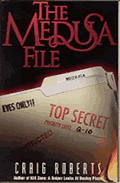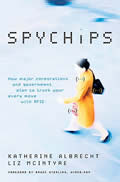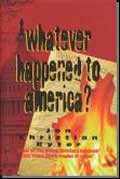Other
Ryter
Articles:
The Two Kerry's:
War Hero or
Traitor?
"Men in Black" The Cult of The Judges
WHEN
PREDATORS BECOME VICTIMS
PART 2 of 2
By Jon Christian Ryter
December 6, 2005
NewsWithViews.com
Much of the damning evidence against Williams came from his acquaintances. When Williams was interviewed by the police, he knew details of both robberies that only someone involved in them would know, since many of the details Williams mentioned when he was questioned were never released to the media and could only have been known by the person who committed the murders. Williams, to this day, insists he is innocent. Over the years, he has alleged: [1] biased jury selection, [2] exclusion of exculpatory evidence, [3] ineffective counsel, [4] misuse of jailhouse and government informants, and [5] prosecutorial misconduct. Williams insists he should never have been arrested because the police had no fingerprints, no blood transfers on his clothes, no eyewitnesses and no other crime scene evidence that linked him to the crimes.
Although he has apologized for founding the Crips, Williams has never renounced his allegiance to the gang. He spent 6 1/2 years in solitary confinement during the late 1980s for assaulting fellow inmates and guards. In 2001 a Swiss member of Parliament, Mario Fehr, nominated Williams for a Nobel Peace Prize for Literature for writing children's books warning kids about getting into gangs. No mention was made of the fact that the real author of his books was journalist Barbara Becnel who served as his ghost writer-editor. In 2004 Williams�from his prison cell�helped broker a peace agreement between the Crips and the Bloods. Williams received a letter from President George W. Bush commending him for his community activism.
In 2002 Williams appeared before a 3-judge panel of the 9th Circuit Court of Appeals in an attempt to have his conviction overturned. The panel upheld his conviction�pretty much negating Williams' claims that he did not receive a fair trial. In a letter to then California Gov. Gray Davis, the judges lauded Williams' efforts in opposing gang violence and asked Davis to consider commuting Williams' death sentence. Davis, who clearly understood the nature of the crimes committed by Williams, would not commute his sentence for the same reason the 9th Circuit wouldn't overturn his conviction. Not only was Williams guilty of four very cold-blooded killings, it appeared to those who studied him that Williams took a particular delight in killing. He was a man without remorse and without a conscience. Among those petitioning the State to carry out the execution of Williams on Dec. 13 was the LAPD.
Since Jamie Foxx played Williams in a made-for-TV movie based on Williams autobiography, Redemption, pressure mounted from the Hollywood crowd and elitist far left on Gov. Arnold Schwarzenegger to grant clemency to Williams. When they meet on Dec. 8, it is likely his sentence will be commuted. A commutation of his sentence will deny both closure�and justice�to Robert Yang and his wife, who were sleeping in their bedroom at the Brookhaven Motel when Williams shot his father, mother and sister. Yang found the bodies of his father, mother and youngest sister. The scene in the office of the Brookhaven Motel is an indelible image he will carry in his mind for the rest of his life.
When John Hicks�the 999th inmate executed since the death penalty was reinstated, Douglas Hughes, an uncle of 5-year old Brandy Green�one of the two people killed by Hicks�said the execution finally gave him closure. He also said he was disappointed with Hicks' deathbed statement. he claimed Hicks' showed no real remorse and never apologized to the families of his victims, Maxine Armstrong, his mother-in-law and Brandy, his stepdaughter, nor asked anyone's forgiveness for killing them. "Twenty years did nothing to change the way he felt about taking her life," Hughes said. Hicks had been on death row since 1986 for killing his 56-year old mother-in-law, and then suffocating his 5-year step daughter to hide the crime. Hicks received a 30-year sentence for a second degree murder of Maxine Armstrong and the death sentence for the premeditated murder of Brandy Green.
As he lay strapped to the gurney, Hicks' said: "I know it's been 20 years of pain and hurt, but during that 20 years I suffered, too. I cared, and loved, too, for Maxine and Brandy. God has forgiven me," he said. "I'm sorry and I wish I could bring them back." Hicks, who was trying to steal drug money from his mother-in-law when she caught him, added: "It began with a syringe in my arm and this day is ending with a needle in my arm. Its come full circle."
A 2004 Gallup poll found that support for the death penalty in the United States is waning even though a large majority of Americans still favor using it even though, Gallup said, only 35% of the population believes the death penalty serves as a deterrent to murder. Those, the pollsters say, who favor the use of the death penalty do so not as a deterrent to murder but simply as punishment. An eye for an eye. Capital punishment advocates don't believe the American people should be saddled with the enormous cost of keeping murderers alive. I agree.
Hicks' lawyer, Marc Mezibov said the execution was a "senseless killing" because the John Hicks that killed Armstrong and Green was not the same John Hicks that was strapped to the gurney on November 29, 2005. Mezibov said the old Hicks was a cocaine addict and it was the cocaine psychosis that was responsible for the deaths of his victims.
Because so much time normally elapses between the trials and convictions of murderers and their executions, the public din at the outrage of their crimes has long faded from the memories of the public, and the indignation is now forgotten. Thus, when the advocates of social justice drag out their soapboxes and protest the outrage of capital punishment as they portray the killers as the victims, few advocates of justice step up to mourn the real victims�those who lives were stolen from them by greedy men and women without of shred of regard for human life until their own life hangs in the balance. "Since 1979," Michael Paranzino, president of Throw Away The Key�a group that supports the death penalty�said, "we've had 100 thousand innocent people murdered in the United States. But nobody is planning on commemorating [them]."
America's problem is that the social justice elites who are able to mitigate the crimes of the miscreants expect the victims of crime to simply forgive and forget. We are, after all, still a Christian society, and while the liberals want to banish Jesus Christ from our lives, our communities and our nation, they still expect us to turn the other cheek and forgive those who trespass against us. Sometimes forgiveness comes hard�as it did for the family of Julie Heath in 1993.
An 18-year old Malvern, Arkansas cheerleader, Julie Heath, was driving home from from visiting her boyfriend in Hot Springs late in the evening on Oct. 11, 1993 when her car broke down in Highway 270. Eric Randall Nance, who was returning to Hot Springs from Malvern, stopped when he saw the stranded redhead. It appears from the evidence that Nance offered to give Heath a lift to Malvern. When she got into his pickup truck, every woman's worst nightmare came true. Nance held a box cutter to her throat and forced her to undress. It appears that, as he tried to rape her, she decided to fight back. It would prove to be a fatal fight for Heath. No match for a 45-year old male, Nance slit her throat with the box cutter.
Nance drove his truck off the paved highway onto an unpaved road that led into the woods where he disposed of the body. He apparently was not worried about being seen since he took the time to put Julie's clothes back on her dead body. In the dark, he didn't realize that her shirt was inside out, as were her panties and her socks. Heath was having her period because, near her body was a used sanitary napkin. On Oct. 18, a hunter discovered her fully clothed body in the woods. Because of a prior history as a sexual predator, and because a witness saw him that evening along Hwy 270, Arkansas police picked Nance up for questioning. They arrested him two days later. Crime scene investigators found several red pubic hairs in the cab of Nance's truck. Forensic testing of the pubic hair found in the truck matched the pubic hair of the dead girl.
Confronted with this evidence, Nance admitted picking her up on Hwy 270. He told police he agreed to drive her back to Malvern. He said as they were driving, she saw the box cutter and became hysterical. Nance said she started hitting him and pulling his hair. He claimed when he put his hand up, defensively, to ward off her blows, the blade got wedged in her throat and killed her. Over the objections of defense counsel, the prosecution presented, as evidence, six prior felony convictions resulting from Nance's rape and beating of two Oklahoma girls in 1982.
After serving half of a 22-year prison sentence, the State of Oklahoma released Nance from their penal system in May, 1993 and let him slip through the crack�five months before he killed Julie Heath in Arkansas. Nance was a sexual predator. He should never have been released from any penal institute until every hour of his sentence was served. And then, the State still had an obligation to keep the public safe from that predator.
There was a double tragedy in the murder of Julie Heath on Oct. 11, 1993. When she testified at Nance's sentencing hearing, Nancy Heath, Julie's mother told the court, "Mr. Nance took my only daughter. I have been under constant doctor's care since her death. I've been to see a psychologist once a week. I'm on numerous medications. My life will never be the same again. This has affected all of my family. It's been very hard on my husband and son. We basically don't know how we can live without her..." Nancy Heath couldn't.
After struggled through the holidays of 1993, Nancy committed suicide shortly before Christmas, 1994 telling her family in the note she left behind that she could not endure another Christmas without Julie. Eric Randall Nance killed both women, but he only paid for the death of one of them. For killing Julie Heath, Nance paid the supreme price on Nov. 28, 1995. He was the 998th murderer executed since the reinstatement of the death penalty.
The claims of the anti-death penalty advocates that capital punishment is not a deterrent to murder�based on polls people taken by anti-death penalty advocates�is sheer, biased nonsense.
How many people have been discouraged from killing a spouse, a business rival, or a nasty neighbor because they knew if they were convicted of capital murder they would face the death penalty? We don't know. Why not? First, because those crimes did not happen. Second, because those who have entertained such thoughts, regardless how fleeting they may have been, are not likely to candidly admit they actually considered killing someone. They may jokingly say they did because some people�well, they just get under your skin. But those who have seriously weighed the option will likely never admit it since the possibility exists that, sometime in the future, the opportunity to escape judgment might make the crime worth the gamble.
|
Subscribe to the NewsWithViews Daily News Alerts! |
Likewise, keeping condemned murderers and rapists alive for two or more decades punishes the taxpayers who are forced not only to pay for the incarceration of people who should have been speedily executed, it also forces the taxpayers to foot the bill for countless appeals to higher State courts, US District Courts, appellate courts and, in some cases, the US Supreme Court. The legal bills, paid by the taxpayers. is staggering. By the time an inmate has exhausted every legal avenue he or she can explore to escape the death penalty, we will have coughed up a million dollars or more for their attempt to evade the sentence we imposed. That doesn't make sense to me. How about you?
Click here for part -----> 1
� 2005 Jon C. Ryter - All Rights
Reserved
Order Jon Ryter's book "Whatever Happened to America?"
Sign Up For Free E-Mail Alerts
E-Mails
are used strictly for NWVs alerts, not for sale
Jon Christian Ryter is the pseudonym of a former newspaper reporter with the Parkersburg, WV Sentinel. He authored a syndicated newspaper column, Answers From The Bible, from the mid-1970s until 1985. Answers From The Bible was read weekly in many suburban markets in the United States.
Today, Jon is an advertising executive with the Washington Times. His website, www.jonchristianryter.com has helped him establish a network of mid-to senior-level Washington insiders who now provide him with a steady stream of material for use both in his books and in the investigative reports that are found on his website.
E-Mail: BAFFauthor@aol.com
When she got into his pickup truck, every woman's worst nightmare came true. Nance held a box cutter to her throat and forced her to undress. It appears that, as he tried to rape her, she decided to fight back. It would prove to be a fatal fight for Heath.












